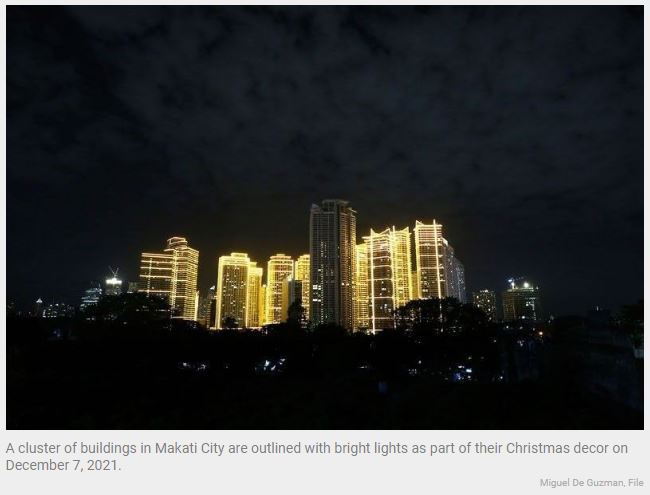Philippines: Strong GDP growth likely sustained in Q2
MANILA, Philippines — The economy likely sustained the strong growth in the second quarter amid the further reopening of the economy from strict COVID-19 quarantine and lockdown protocols, according to economists.
ING Bank senior economist Nicholas Mapa said the country’s gross domestic product (GDP) growth accelerated to 8.8 percent in the second quarter.
“Solid household spending boosted by election-related outlays boosted the economy in the second quarter. Relaxed mobility curbs also helped. Capital formation, one other driver as imports of capital machinery rose for the quarter,” Mapa said.
Mapa said offsetting gains would be the slower government spending due to the election ban, as well as the sizable trade deficit.
China Bank chief economist Domini Velasquez said the economy likely grew by 8.2 percent in the second quarter as it continued to gain momentum from coming out of the pandemic and the uncertainties in the past two years.
“Revenge spending and domestic travel were clearly evident in the second quarter as the Omicron variant in the preceding quarter waned,” Velasquez said.
According to Velasquez, the second quarter figures also received an extra boost from election spending and the return of business process outsourcing (BPO) workers onsite.
Moreover, Velasquez said employment figures were favorable during the quarter as businesses slowly posted recoveries from COVID lockdowns.
“On the supply side, we anticipate that all sectors will post positive growth rates, led by services, as more and more Filipinos feel confident about going out. Manufacturing will also post robust performance as evidenced in the purchasing managers index hitting recent highs in the second quarter,” Velasquez said.
On the other hand, Velasquez said inflation may have reduced spending toward the end of the second quarter.
“However, we think that this was offset by Filipinos’ fervor in spending on recreational activities and some additional spending push during the election season,” Velasquez said.
For 2022, China Bank sees the economy posting a healthy growth of around seven percent despite challenges of high inflation and weaker external demand.
“Based on past experience, the Philippines is less affected by global downturns since it exports less compared to its other Asian neighbors. Moreover, domestic demand previously remained strong despite a high inflation environment, e.g. in 2018, household spending still grew by six percent even if inflation averaged 5.2 percent for the year,” Velasquez said.
Michael Ricafort, chief economist at Rizal Commercial Banking Corp., said the economy likely grew by at least eight percent in the second quarter, largely driven by the further reopening of the economy toward greater normalcy.
“Philippine GDP could grow by an average of at least six to 6.5 percent for 2022, but with some potential upside surprises, toward seven percent levels, in view of the lower base, as the economy further re-opened versus some lockdowns in 2021, would be reasonable to expect, after 5.7 percent in 2021,” Ricafort said.
According to Security Bank chief economist Robert Dan Roces, economic gowth slowed to 7.5 percent from April to June on the back of the slower growth in private consumption.
“Looking forward, the spillover effects of inflation pressures and several geopolitical headwinds may still be felt in the third quarter and continue to constrain private consumption’s full potential and thus slow down growth. However, recent trends have shown commodity prices settling in a new, lower range, and as such may provide price relief by 4Q22 in time for the peak consumption season,” Roces said.
UnionBank chief economist Ruben Carlo Asuncion said the GDP growth in the second quarter was at 7.2 percent, driven by consumption growth.
“We think that previous quarters of positive economic growth and recovery have spilled over in the second quarter even amid rising inflation and monetary policy hikes, not to mention an ongoing COVID-19 infection surge,” Asuncion said.
Asuncion believes the purchasing power of consumers remained intact despite the weaker peso, lower remittances from overseas Filipino workers (OFWs), and elevated crude oil prices.
“Overall, people movement have continued to be positive and above the baseline as the economy proceeds to more re-opening,” Asuncion said.
The Aboitiz-led UnionBank projects the GDP growth to settle at 6.5 percent this year, the lower end of the government’s 6.5 to 7.5 percent target range, amid the ongoing Russia-Ukraine war, the now brewing conflict between Taiwan/US versus China, rising commodities prices due to supply chain challenges, and further monetary policy moves by global central banks including the Bangko Sentral ng Pilipinas (BSP).
“We expect economic growth in the second half to be softer than expected in the first half because of higher inflation impact and the rising interest rate environment, both domestic and abroad,” Asuncion said.
Source: https://www.philstar.com/business/2022/08/08/2201003/strong-gdp-growth-likely-sustained-q2


 English
English




